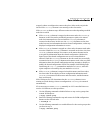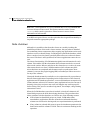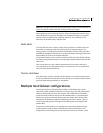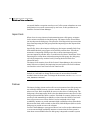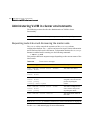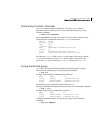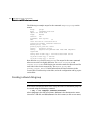
419Administering cluster functionality
Multiple host failover configurations
For details on how to clear locks and force an import, see “Moving disk groups
between systems” on page 185 and the vxdg(1M) manual page.
Corruption of disk group configuration
If vxdg import is used with -C (clears locks) and/or -f (forces import) to
import a disk group that is still in use from another host, disk group
configuration corruption is likely to occur. Volume content corruption is also
likely if a file system or database is started on the imported volumes before the
other host crashes or shuts down.
If this kind of corruption occurs, you must probably rebuild your configuration
from scratch and reload all volumes in the disk group from a backup. To backup
and rebuild the configuration, if nothing has changed, use
vxprint -mspvd and
store the output which can be fed to
vxmake to restore the layouts. There are
typically numerous configuration copies for each disk group, but corruption
nearly always affects all configuration copies, so redundancy does not help in
this case.
Disk group configuration corruption usually shows up as missing or duplicate
records in the configuration databases. This can result in a variety of
vxconfigd error messages
VxVM vxconfigd ERROR V-5-1-569 Disk group group,Disk disk:Cannot
auto-import group: reason
where the reason can describe errors such as:
Association not resolved
Association count is incorrect
Duplicate record in configuration
Configuration records are inconsistent
These errors are typically reported in association with specific disk group
configuration copies, but usually apply to all copies. The following is usually
displayed along with the error:
Disk group has no valid configuration copies
See the Veritas Volume Manager Troubleshooting Guide for more information on
Veritas Volume Manager error messages.
If you use the Veritas Cluster Server product, all disk group failover issues can
be managed correctly. VCS includes a high availability monitor and includes
failover scripts for VxVM, VxFS, and for several popular databases.
The -t option to vxdg prevents automatic re-imports on reboot and is
necessary when used with a host monitor (such as VCS) that controls imports
itself, rather than relying on automatic imports by Veritas Volume Manager.







